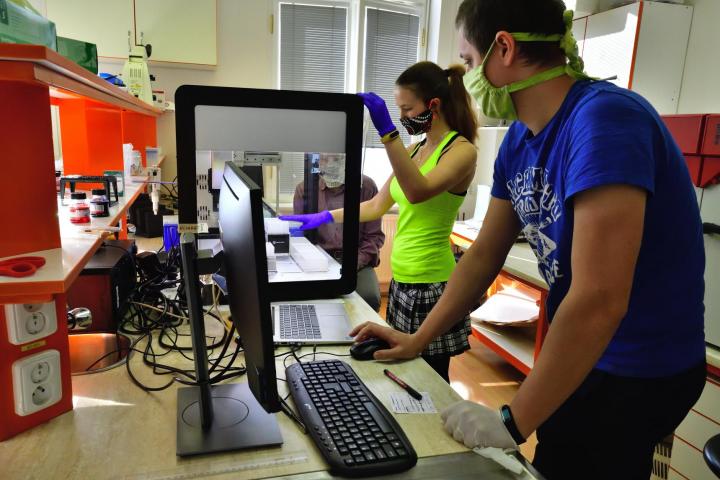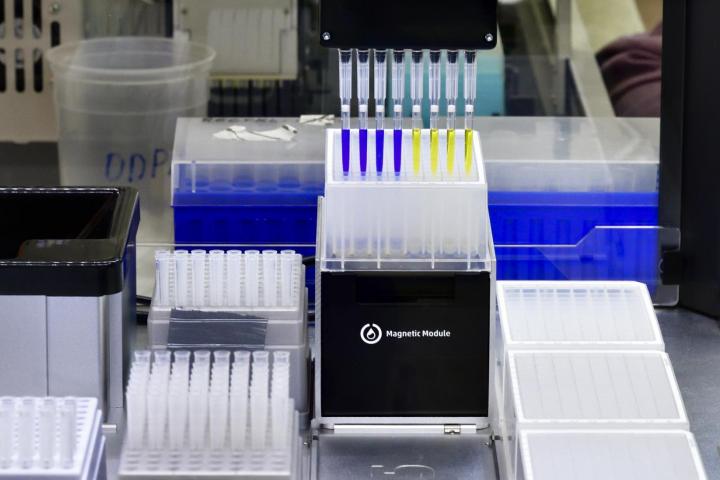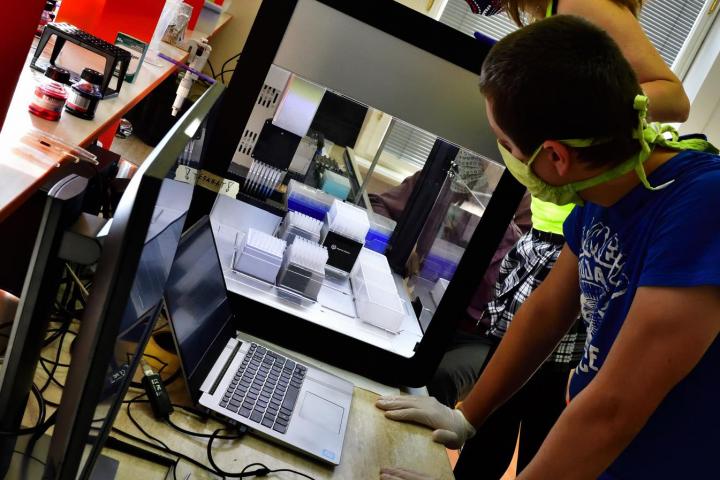
The collaboration between scientists and the hospital came about thanks to the ongoing CIIRC project, which delivered a pipetting robot to Na Bulovce Hospital. Demand for automation increased significantly during the crisis, and so the Motol University Hospital turned to the university as well. This time a group of researchers and students from FEE CTU participated. A postgraduate student of experimental plant biology from the Faculty of Science, Charles University, who has experience with the process of RNA extraction, joined the team and became a key link between the fields of robotics and biochemistry. Both teams working for the hospitals are now intensively communicating and sharing their experiences to ensure that robots are seamlessly deployed as soon as possible.
“To be operational, the system must pass rigorous testing. And of course, the responsibility here is truly enormous - in case of false positive coronavirus testing, we would quarantine the patient and his family! But when everything goes well, robots will be very beneficial to the hospital. They can work nonstop, don’t get tired, never lose attention and even don’t get bored with routine work. We believe that thanks to us, the lab technicians will be able to do other work that cannot be easily automated, or at least get a little rest,” said Petr Váňa, PhD student from the Department of Computer Science FEE CTU, who has been working on the project since its launch at the end of March.
The main aim of the procedure is to minimize the risk of so-called cross-contamination. This is achieved by optimizing the movement of the robot's pipetting head so that it does not endanger other samples by accidentally dripping the sample. Therefore, the pipette tip must not pass over a sample other than that for which it is intended. This greatly reduces the risk of contamination of other samples and thus the unintended identification of healthy persons as infected. Together with the Institute of Medical Microbiology of the 2nd Faculty of Medicine of Charles University and the Motol University Hospital, the IOCB AS CR is key to the solution by developing innovative test sets for the isolation of viral RNA enabling diagnosis of COVID-19 disease as the number of tests from abroad is limited in the Czech Republic. In addition, many manufacturers do not allow the use of non-corporate chemicals on their equipment which are, however, scarce.
Due to the fact that the procedure is based on chemicals which we can produce in the Czech Republic in sufficient quantities, the laboratory becomes potentially independent of the potential inability of manufacturers to supply commercial test kits. Without such extensive multidisciplinary cooperation of several research centers, the project could not work effectively. “The involvement of robotics in improving laboratory procedures in healthcare proves that together we are able to approach the target faster and be far more effective than individuals from seemingly distant fields,” comments Adéla Přibylová from the Faculty of Science, Charles University.
Software that is being developed under the hands of scientists and students may find application in other laboratories and laboratory procedures in the future. Although automation by pipetting robots is now common practice, deployment of other robots can speed up and streamline the testing process. Moreover, the optimized procedure of FEE CTU is faster programmable and can be used on older or cheaper types of robots, which will increase their reliability during testing. These robots are found in the Czech Republic in high numbers and their users could directly implement the developed program.
Photo: Roman Sejkot, CIIRC ČVUT

